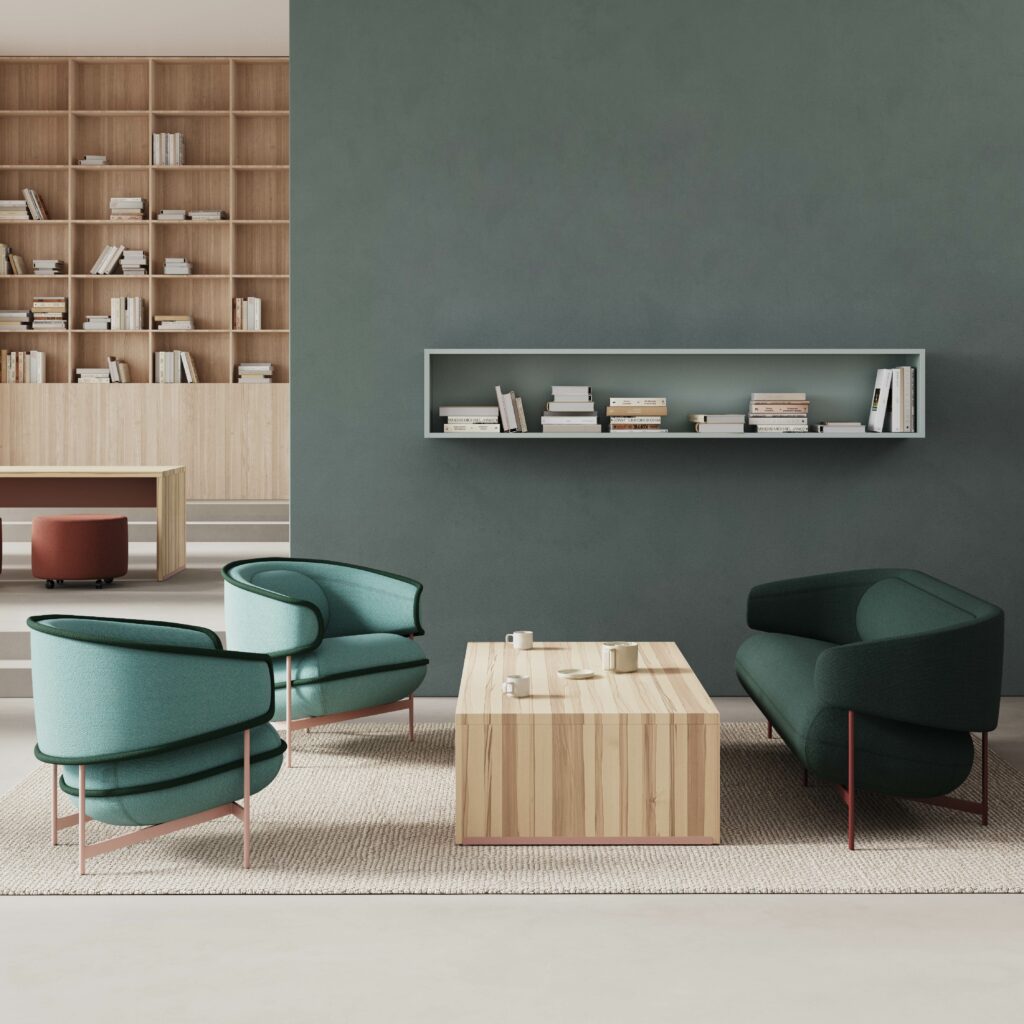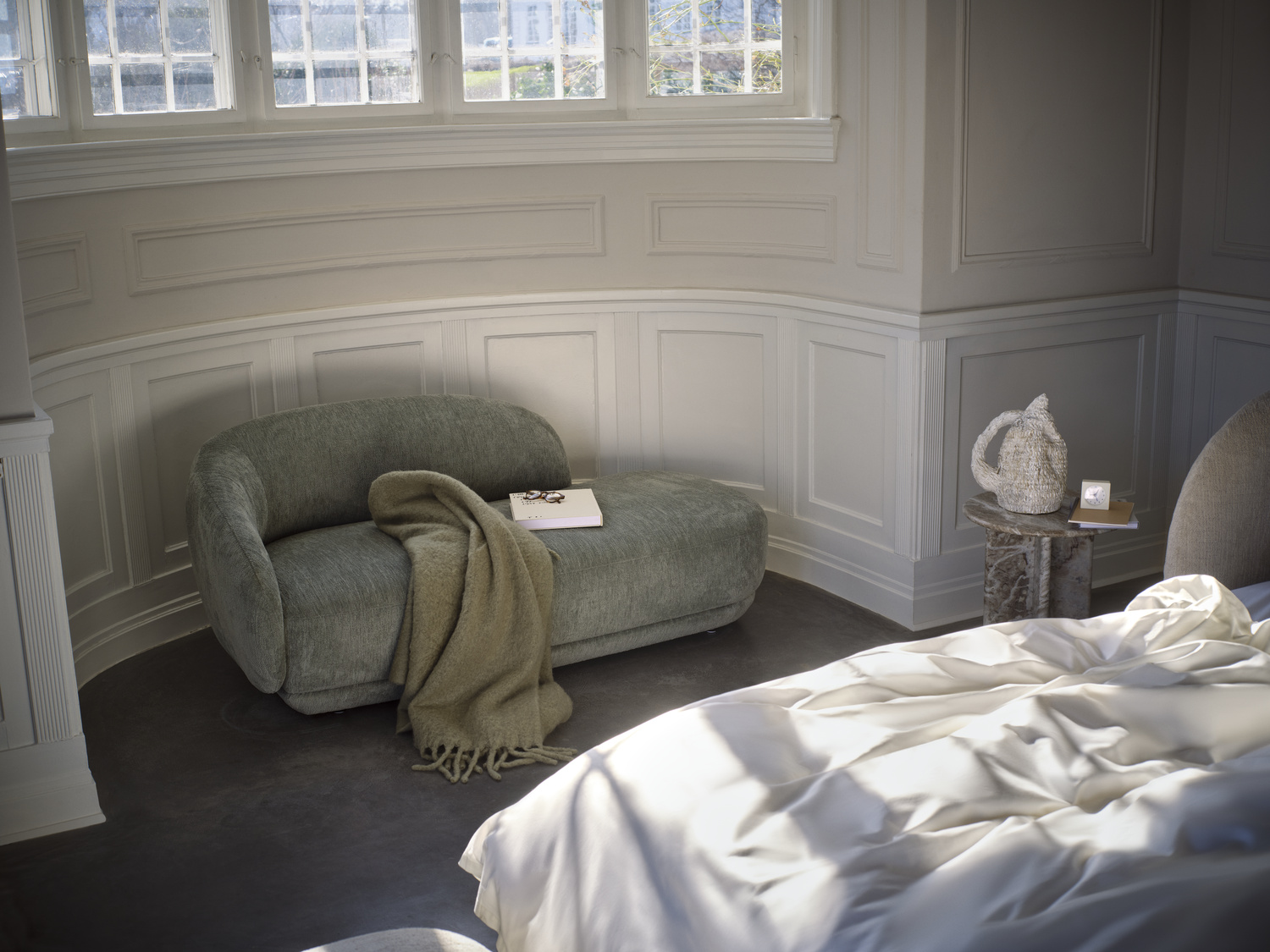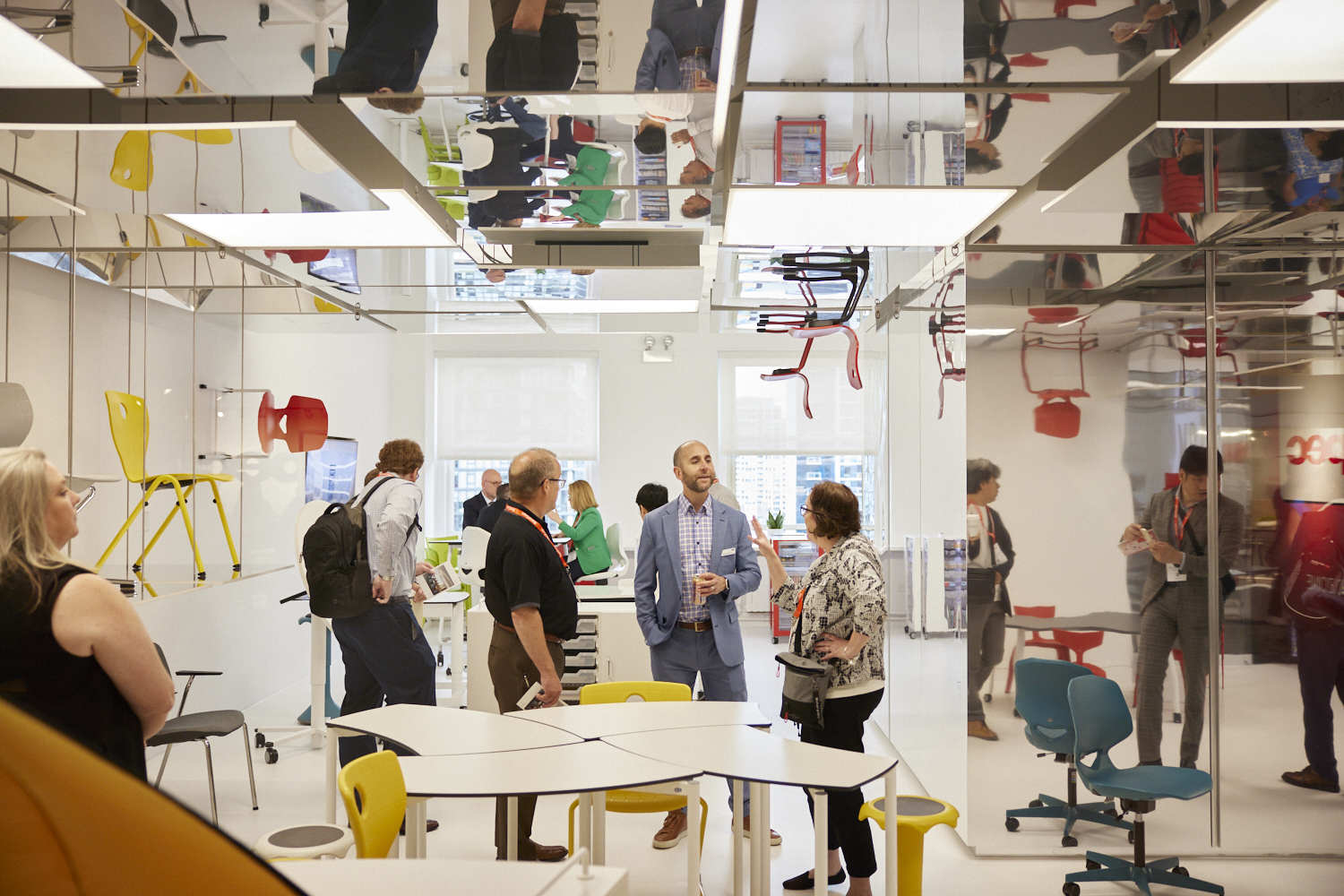The 55th edition of NeoCon will be held at THE MART in Chicago, June 10-12. An estimated 50,000 attendees will convene for a firsthand experience of the latest trends and innovations influencing the future of shared spaces. From fostering deeper connections and prioritizing sustainability to learning from neuroscience, NeoCon exhibitors are pioneering what’s next in design with creative solutions for environments that are not only innovative and functional but also enriching and inclusive.
Prominent themes listed below have shaped today’s workplaces, hotels, restaurants, retail spaces, educational institutions and healthcare facilities—alongside standout new products and solutions from NeoCon exhibitors that support these movements.
Community and co-creation to the fore
Community and culture are cultivated through spontaneous encounters and casual in-person interactions. Designing built environments that promote these moments of connection and collaboration—camaraderie is crucial to nurturing a positive company culture. Gensler’s design forecast for 2024 notes that “creating human-centric workplaces that inspire purpose and demonstrate organizational values will help firms stand out to potential talent and clients alike.” To foster this sense of connection, designers employ subtle social engineering by using spatial arrangements to create collaborative areas that complement private, focused workspaces. Additionally, they are providing more co-creation spaces, facilitating collaborative learning through various tools and resources, enabling teams to brainstorm, experiment and innovate together.
An office full of co-workers is a strong source of motivation and energy. In a regular investigation of the future of work, leading architecture and design firm Corgan conducted interviews and surveys with executives, managers, HR leaders and hybrid knowledge workers. The firm found that 76% of survey participants either strongly or somewhat agree that they feel more motivated working in a group or seeing others around them being productive.
“Physically gathering in a place to work toward common goals and a shared purpose is a powerful way for humans to connect and feel a sense of belonging,”
David Euscher, vice president and interiors studio leader at Corgan and ASID chair elect, said.
New introductions from NeoCon exhibitors—such as GRVT by Ghent, Collaborative Spaces by Global Furniture Group, Sonrisa Lounge Furniture by KI, Atmus Mobile Desk by Clarus, Pavilion O by Kettal and Panigiri by Extremis—all present mobile, flexible solutions that can transform collaborative environments at a moment’s notice.
Colours and emotions: The rise of neuroaesthetics
NeoCon exhibitors are blending form and function using the principles of neuroaesthetics—a nascent field exploring how environmental elements like colour, sound and art impact individuals’ brains, emotions and spatial experiences on a subconscious level. The notion that sights and sounds impact one’s mood is not novel, but neuroaesthetics takes things a step further by harnessing these elements to promote well-being, productivity and enrichment.
“Neuroscience-informed design shows us that science can guide us to good choices,” said Sally Augustin, a fellow of the American Psychological Association and principal of Design With Science. Multiple studies have found that beautiful and functional design is at the root of people’s happiness in the workplace. The immersive biophilic garden by Garden on the Wall was born from this human-centric desire by crafting indoor preserved gardens and moss walls that transcend the ordinary while elevating moods and stimulating minds.
Research also shows that it is easier for brains to visually process patterns and shapes found in nature, such as Shaw Contract’s Arctic Escape—a collection of rugs and broadloom inspired by the frost-covered and icy landscapes of the polar tundra. Similar studies suggest that warm colours—like Pantone’s colour of the year, Peach Fuzz—are associated with feelings of joy, while cool colours correlate with feelings of calm and contentment. The American Society of Interior Designers (ASID)’s 2024 Trends Outlook notes that blue hues are becoming the dominant accent colors—from dusty and steely tones like Sherwin-Williams’ Upward, to bold and bright hues like Benjamin Moore’s Blue Nova. This shift may signify a collective longing for clarity, purity and increased intuition—all of which are reactions to blue as prescribed by colour theorists.
Unexpected pops of colour can also subconsciously stimulate positive distractions, serving as mental respites in stressful moments. Designtex’s Joy Collection embodies this notion with eight woven and coated textile designs centred on stimulating the brain’s pleasure centres. The use of vibrant colours, engaging textures and artful patterns brings a sense of clarity, connectedness and delight.

Inclusive innovation: Designing for equity and wellbeing
As more people continue to prioritize mental and physical health, more thought must be put into how this translates in workplace environments—from interiors designed for all ages to essential amenities like mother’s rooms, spaces for meditation and physical wellness areas and solutions. Emotional and physical needs are not only addressed on-site and inclusive of working hours, but workplaces have started to see the benefits of a more holistic approach. ASID’s 2024 Trends Report notes a recent survey in which employees cited “noise and lack of privacy for focused work” as the major barriers to effective work. Designers are recognizing the need to provide both the opportunity for open collaboration at a variety of scales, as well as audio and visual privacy to minimize disruptions, thereby enhancing productivity and employee satisfaction.
This year at NeoCon, exhibitor solutions are igniting fresh discourse in the realm of inclusive innovation and human-centred design. Silen Bridges mobile—designed by award-winning Austrian Designer Kai Stania for Silen—is designed to be more of a “room uniter,” than a divider––meant to foster sustainable, healthy workspaces beyond desks and private offices through a simultaneously tranquil and collaborative seating solution. pba’s TOCCO Collection is the first door hardware collection specifically designed to address sensory sensitivity and to meet the tactile preference of all users. The grip is made of Aquafil’s ECONYL nylon. Oyster Wellness collaborated with renowned exercise physiologist Jesse Schwartzman to tackle lower back pain, office workers’ biggest compensation injury—resulting in an ergonomic office chair that ensures natural spinal alignment and engaged lower back muscles.
Armstrong Flooring’s MedinPure is a calming flooring and surface solution that is simultaneously high-performing, sustainable and durable. The colours, inspired by nature, are designed to support mental well-being and evoke a sense of calmness. Keilhauer’s Foryu chair is designed to calibrate to each unique user through a fully integrated, self-weighted mechanism that automatically adjusts for different weights and sizes. Schiavello’s collection of Focus Quiet Rooms offers purposeful and malleable spaces that accommodate the different ways in which people work.
Sustainability: A non-negotiable
With the built environment responsible for approximately 42% of annual global CO2 emissions, sustainable design practices have shifted from being a trend to an essential expectation. The use of eco-friendly, circular materials and solutions in the built environment is the new norm. Companies are opting for materials that have a lower environmental impact, such as recycled plastics, reclaimed wood and biodegradable composites. Production transparency to consumers continues to be a significant demand and more forward-thinking firms and furniture brands alike have demonstrated commitments to environmental stewardship by reducing carbon and physical footprints, decarbonizing the supply chain and pursuing LEED, BREEAM and other certifications. On-site at NeoCon, Haworth’s DesignLab—a collective of designers tasked with researching new innovations—will focus on circular design, emphasizing sustainability at each step of a product’s life cycle from inception to recycling and reuse. Andreu World’s new circular design challenge calls on industry professionals to join in adopting greener practices such as eco-design, zero waste management, carbon neutrality, adherence to industry certifications and sustainable material selection.
Standout sustainable solutions from NeoCon exhibitors include Ultrafabrics’ Volar Bio with a 66% mix of recycled, renewable and bio-based content. The 100% recycled plastic tabletop on Scandinavian Spaces’ Best of NeoCon 2023 award-winning Tinnef is now available in even more rejuvenated colorways. Turf’s new nature-inspired stone textures emulate the dynamic veining and intricate details of natural stone. Davis Furniture’s X50 collection combines comfort, functionality and sustainability in a sleek yet minimalistic design, featuring polypropylene components made of 100% pre-consumer recycled content. Slalom’s Bloom underscores the importance of acoustic wellness while utilizing bio-based materials derived from natural origins like flowers and grass. C.F. Stinson’s Sea Change is making waves with six, sustainable textiles crafted from 100% post-consumer recycled polyester containing Seaqual marine plastic. Nienkämper’s Vox Tambour uses a sustainable alternative to traditional acoustic panels called eelgrass—an eco-material offering excellent acoustic, thermal and moisture-regulating properties.
Show registration for NeoCon 2024 is complimentary for all attendees.










